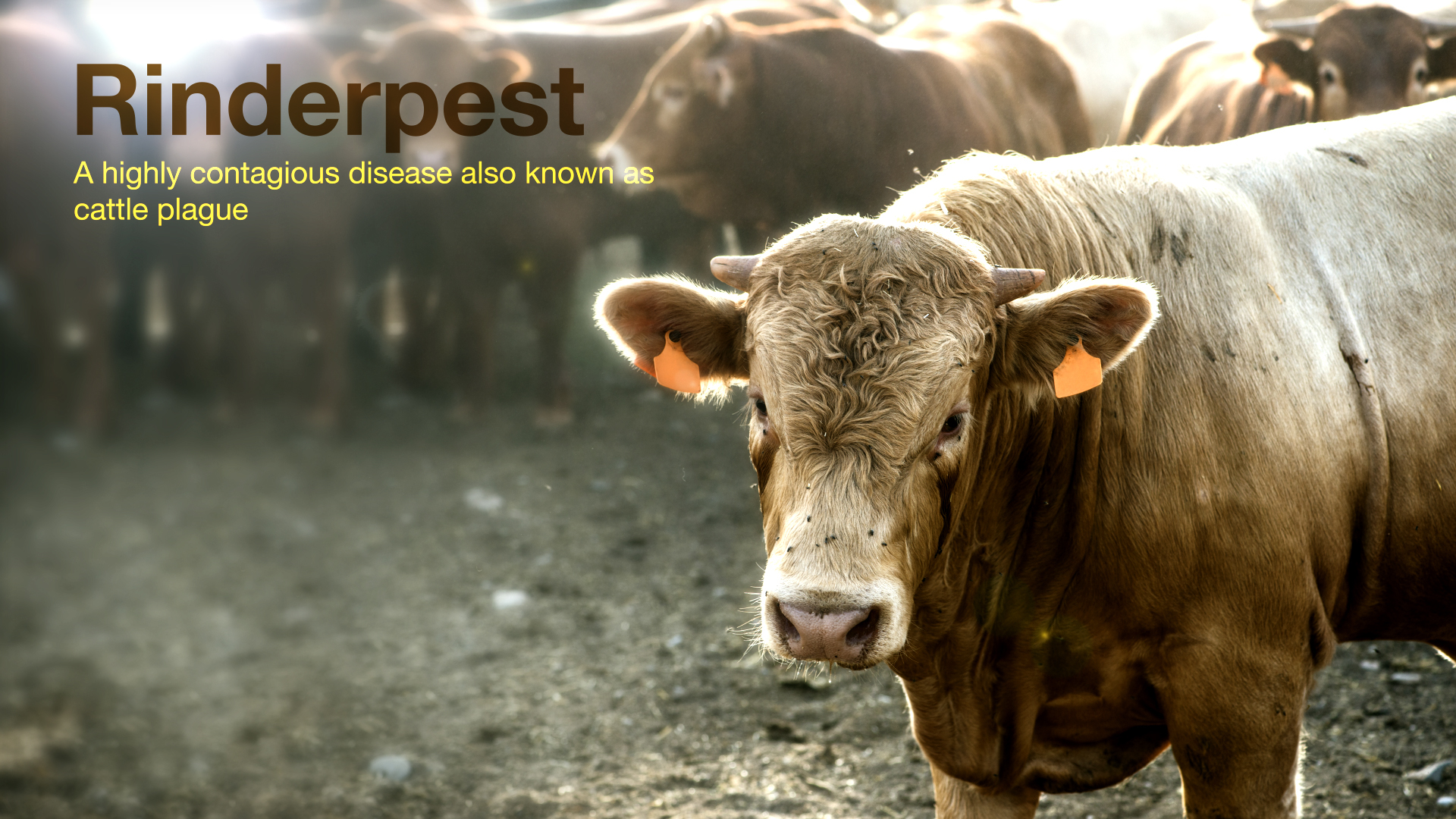Rinderpest was a viral infection that infected cattle such as buffaloes, deer, giraffes, antelopes, warthogs, wildebeests, and numerous species of the even-toed ungulate family. It was also known as the steppe murrain, contagious bovine typhus, or cattle plague. This viral infection had an extremely high mortality rate and was transmitted through direct contact, drinking virus-tainted water, and air.
The disease had been eradicated from the world through a global eradication program, and the last case came into notice in 2001. It is the second disease to be eradicated in the history of mankind. The virus was known to affect areas of Africa, the Indian subcontinent, Europe, and Middle Eastern regions with some cases emerging in the regions of Brazil and the USA. Due to this, livestock was adversely affected on a huge scale and threats loomed over food production for innumerous societies.

Symptoms
This viral infection proved to be highly fatal with the mortality rate reaching around 100%. The first observable signs and symptoms of the disease were fever, eye and nasal discharges, and loss of appetite. In more advanced cases, irregular erosions and necrotic lesions appeared inside the mouth of the cattle, nose lining, and around the genital tract region. These lesions also appeared inside the intestine which led to dysentery and diarrhea.
As the viral infection worsened, the cattle became severely affected by acute diarrhea, preceded by constipation. The infected cattle survived only around 6-12 days after getting infected, showing these signs.
The signs and symptoms were hugely dependent upon the strain of the virus and the host’s susceptibility. These symptoms were followed by depression, loss of appetite, reduced milk production, nasal and eye discharges, and labored, rapid breathing. Severe tearing or lacrimation along with salivation occurred, which got turned into purulent, and even blood-stained.
Causes
This acute, highly contagious disease severely affecting the ruminating animals was caused by the paramyxovirus (genus morbillivirus). This virus was very closely related to the ones responsible for causing viral distemper in dogs and measles in humans.
This highly contagious virus spread through close direct or indirect contact, with an incubation period of three to nine days. After the incubation period, the virus started to affect the cattle through fever, and loss of appetite. With the onset of diarrhea and dysentery, the virus invaded the internal organs of the cattle.
Eventually, the cattle would fall into coma or prostration and would die in 6-12 days. The main cause of death of the cattle would be dehydration. The disease was assumed to have emerged from Central Eurasia which eventually spread over Europe and Asia, through various trade and migration routes.
Treatment
The disease was treated through well-cultured vaccines. The major aim in the eradication of the disease was focused on control of the disease in wild animals and the termination of domestic animals that were infected. One of the most effective methods for controlling infectious diseases was immunization through vaccines along with quarantine.
The earlier vaccine for rinderpest was formulated through treated animal organ extracts. The disease is treated as a biological weapon due to its high fatality rate, extremely high communicability in non-immune cattle.
Furthermore, cattle of the present are now no longer immune to rinderpest and thus highly susceptible to the disease. The disease had made a drastic impact on society, leading to the formation of OIE, which looks after controlling infectious diseases in animals.
Disclaimer: The information in no way constitutes, or should be construed as medical advice. Nor is the above article an endorsement of any research findings discussed in the article an endorsement for any of the source publications.








